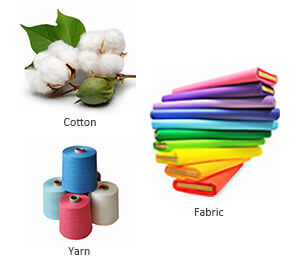Site: Home > Home > News and events
According to the Ministry of Commerce of China, the Regional Comprehensive Economic Partnership Agreement (RCEP) will come into effect on January 1, 2022. China Textile Testing Equipment Foreign Trade Corporation will benefit from this agreement. RCEP not only brings direct "dividends" such as tariff reduction and exemption, investment and trade facilitation, but also helps restructure the industrial value chain in East Asia and accelerate the economic recovery process of various countries. It will also bring many benefits to the Chinese textile industry.
The 15 member states of RCEP include the ten ASEAN countries, as well as China, Japan, South Korea, Australia, and New Zealand. Its total population, economic volume, and total trade account for about 30% of the global total. Therefore, RCEP is also known as "the world's largest free trade zone."
The head of the International Department of the Ministry of Commerce of China stated that the official entry into force of RCEP is a major new development in East Asian regional economic integration, which will greatly optimize the overall business environment in the region, significantly reduce the institutional costs of enterprises using free trade agreements, and further enhance the free trade agreement belt. The coming trade creation effect.
The person in charge said that after the agreement comes into effect, more than 90% of the goods trade between approved members will eventually achieve zero tariffs, and the tax will be reduced to zero immediately and the tax will be reduced to zero within 10 years, which means that countries will be more Commitment to the liberalization of spot trade in a short period of time.

This will have a far-reaching positive impact on China's textile industry to expand the scale of foreign trade and deepen cooperation in the industrial chain and supply chain within the region.
Before the signing of RCEP, China had established bilateral free trade agreements with most RCEP member states. But with the help of RCEP, the "bilateral cooperation" between China and other member states will be upgraded to "multilateral cooperation" in East Asia. Including, China and Japan, the world’s second largest and third largest economy, will also form a zero-tariff free trade arrangement for the first time: China will eventually reduce tariffs on 86% of Japanese products to zero, and Japan will impose a tariff on 88% of China’s Product tariffs were eventually reduced to zero. This will be positive for China's textile and apparel exports.
"China is ready to implement RCEP." The head of the International Department of the Ministry of Commerce of China said recently that the Ministry of Commerce has organized 3 national RCEP special trainings, covering all prefecture-level cities, pilot free trade zones and national economic development zones. There are more than 66,000 people, and more than 70% are business representatives.
After the RCEP officially takes effect, it will greatly optimize the overall business environment in the region, promote a substantial increase in trade and investment in the region, and bring vigorous business opportunities.
In the field of service trade, the level of openness under the RCEP of each country is significantly higher than that of their respective "10+1" agreements, covering many important fields such as finance, telecommunications, transportation, tourism, education, etc., and will be fully transformed into The negative list further enhances the level of openness.
In the field of investment, each member made a high-quality commitment to non-service sector investment by adopting the negative list method, and no new restrictions should be added to the list. At the same time, the level of investment protection has been strengthened, which is conducive to the mutual expansion of investment by enterprises from various countries in the region, and it is also conducive to China. Enterprises "go out". This is also a rare opportunity for Chinese textile companies.
The textile industry should give full play to the comprehensive advantages of China's complete industrial chain and complete supporting facilities to continuously improve its international competitiveness. For the textile industry, after RCEP takes effect, companies can introduce advanced equipment from Japan, strengthen cooperation in production capacity, and upgrade the textile and apparel industry.
Yu Benlin, director of the International Department of the Ministry of Commerce, said that after the full implementation of RCEP, it will drive nearly one-third of the world's economy to form a unified super-large-scale market. The room for development is extremely broad, and it will inject strong impetus into regional and global economic growth.
Copyright 2022:Qinsun Instruments Co., Limited
High-end textile tester supplier Email:info@qinsun-lab.com | Textile Testing Equipment pdf | Tel:021-67800179 |